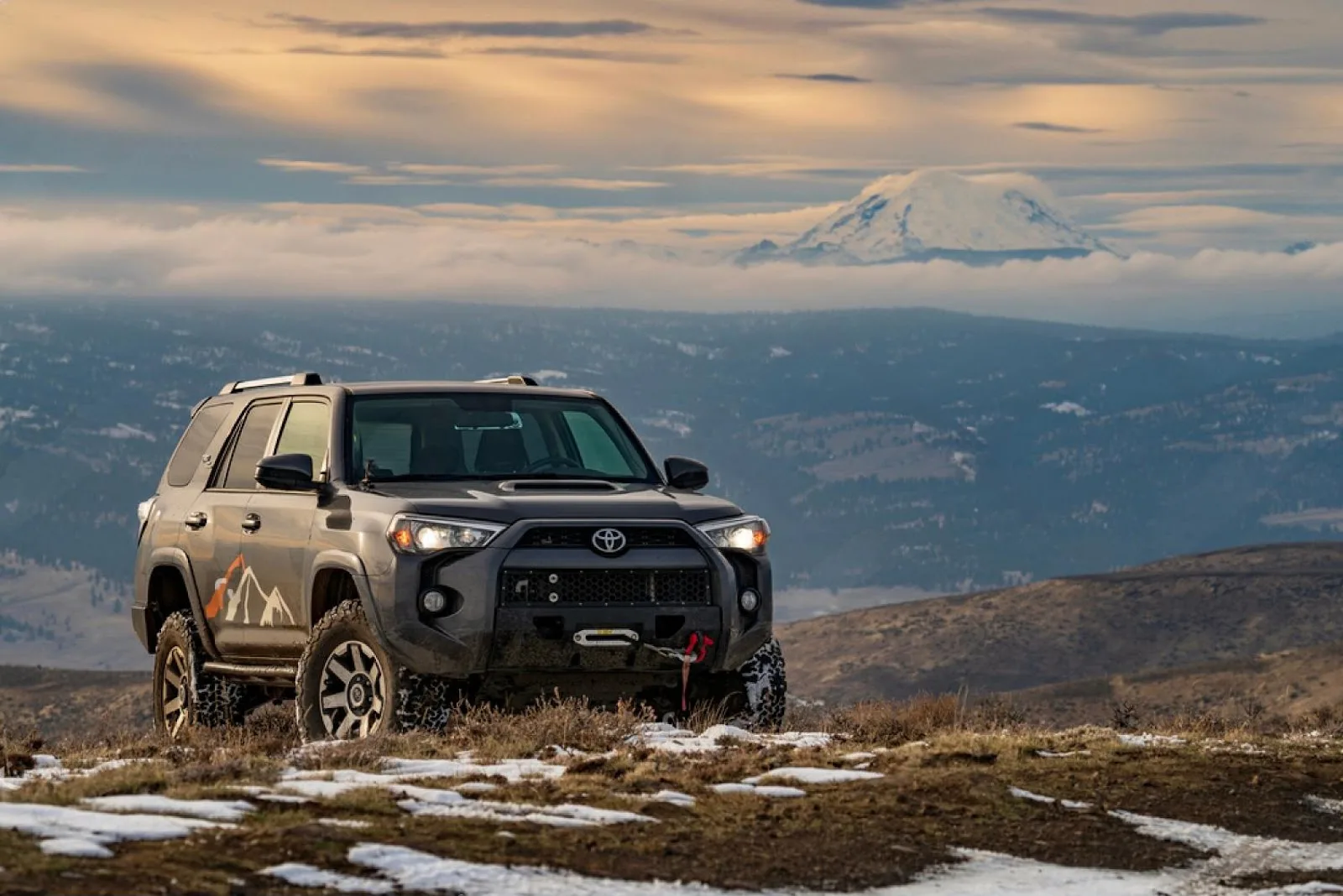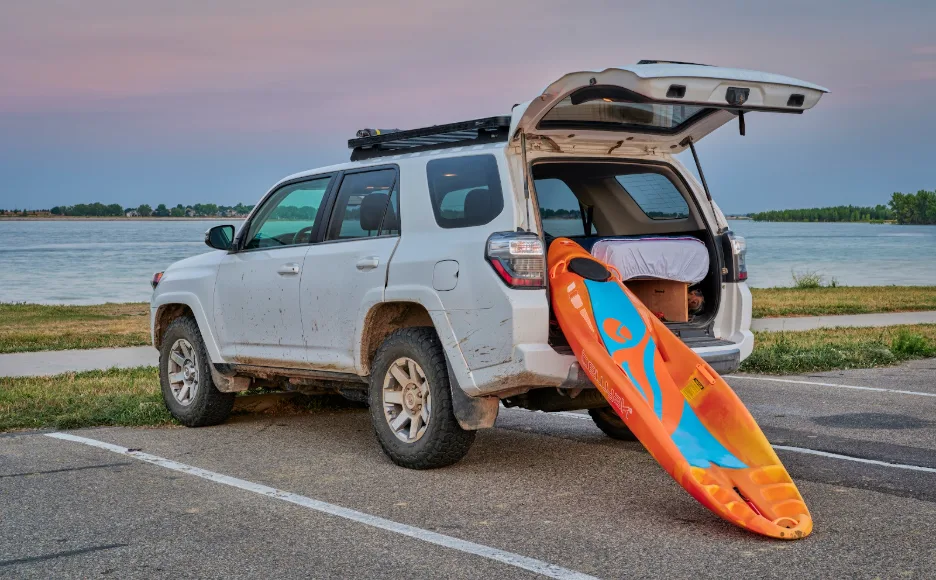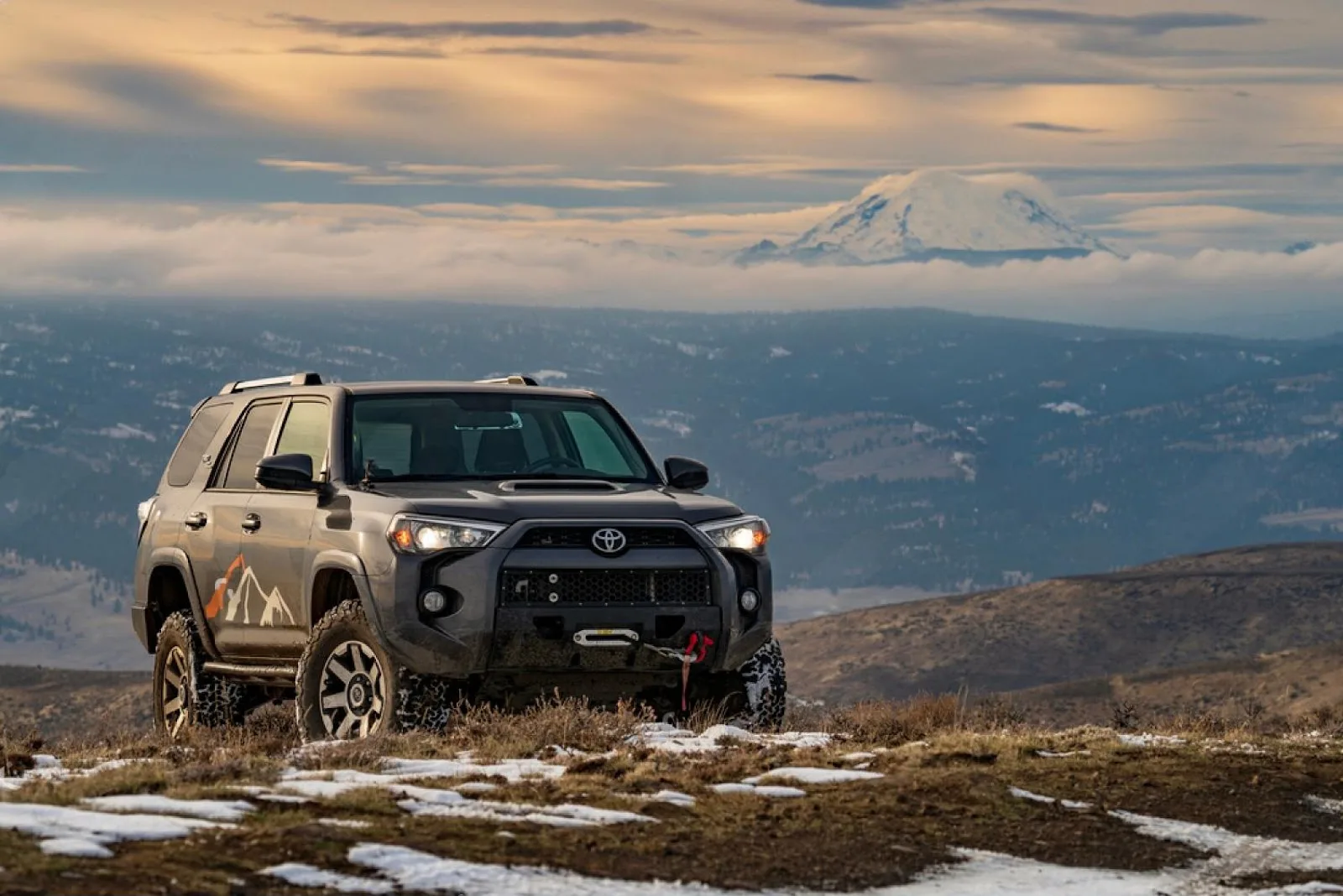Brief History of Toyota 4Runner
Since 1983, the 4Runner has stood as an example of dominance in the 4WD market on the North American landscape. The Land Cruiser has been in and out of the U.S. market, but the 4Runner has stood firm, giving American off-roaders a 4WD SUV choice from the Toyota nameplate.
With the introduction of the 6th generation 4Runner for the 2025 calendar year, there’s a new standard in SUVs and the 4Runner is leading it. MotorTrend says it’s badass and burly; they’re not wrong.
Expectations and Significance of the 2025 Model
There are plenty of 4Runner fans who’ve been waiting patiently for this recent model. In Toyota’s own words, it’s an icon that inspires exploration.
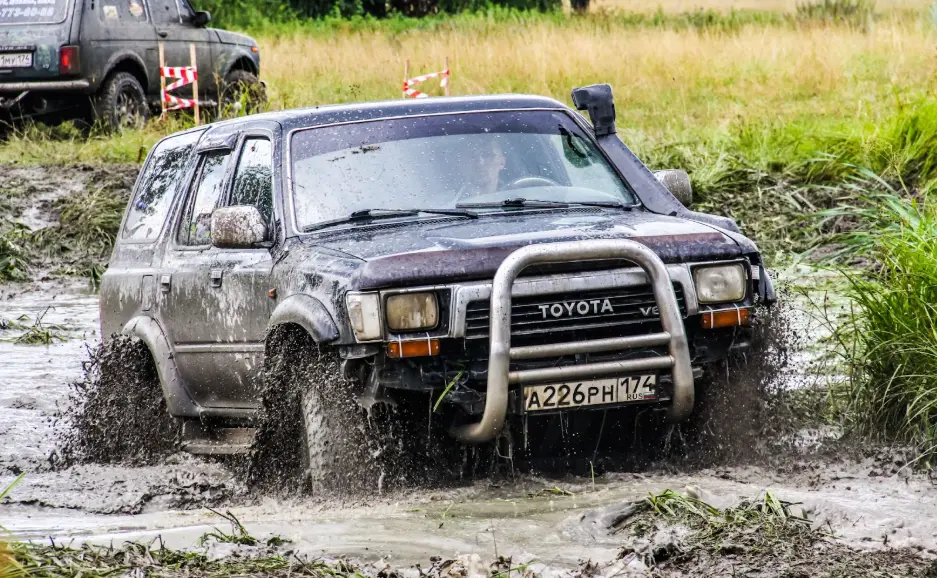
What’s New for 2025?
For more than 40 years, the 4Runner has remained steadfast to its roots as a rugged, versatile, and durable off-road vehicle. Now entering its 6th generation, the 4Runner is more capable, advanced, and refined than ever. Take a look at what changes are in store for 4Runner fans.
Evolution and Features of the Sixth Generation
First, the new 4Runner joins its siblings with a hybrid option. Second, the SUV is now married to a modular platform that adds strength to the entire body. The TNGA-F platform is the foundation for other 4WD icons like the Tacoma, Tundra, Land Cruiser, and Sequoia.
Major Changes from the Fifth Generation
In addition to the complete overhaul of the 4Runner, Toyota added two more trim levels to bring the total to nine with a heavy emphasis on off-roading.
Exterior Design
Let’s talk about the exterior. The updated body style has moved away from an SUV appearance with smooth lines and a nondescript grille to a beefy truck-like appearance that includes a dominant grille and fender flares.
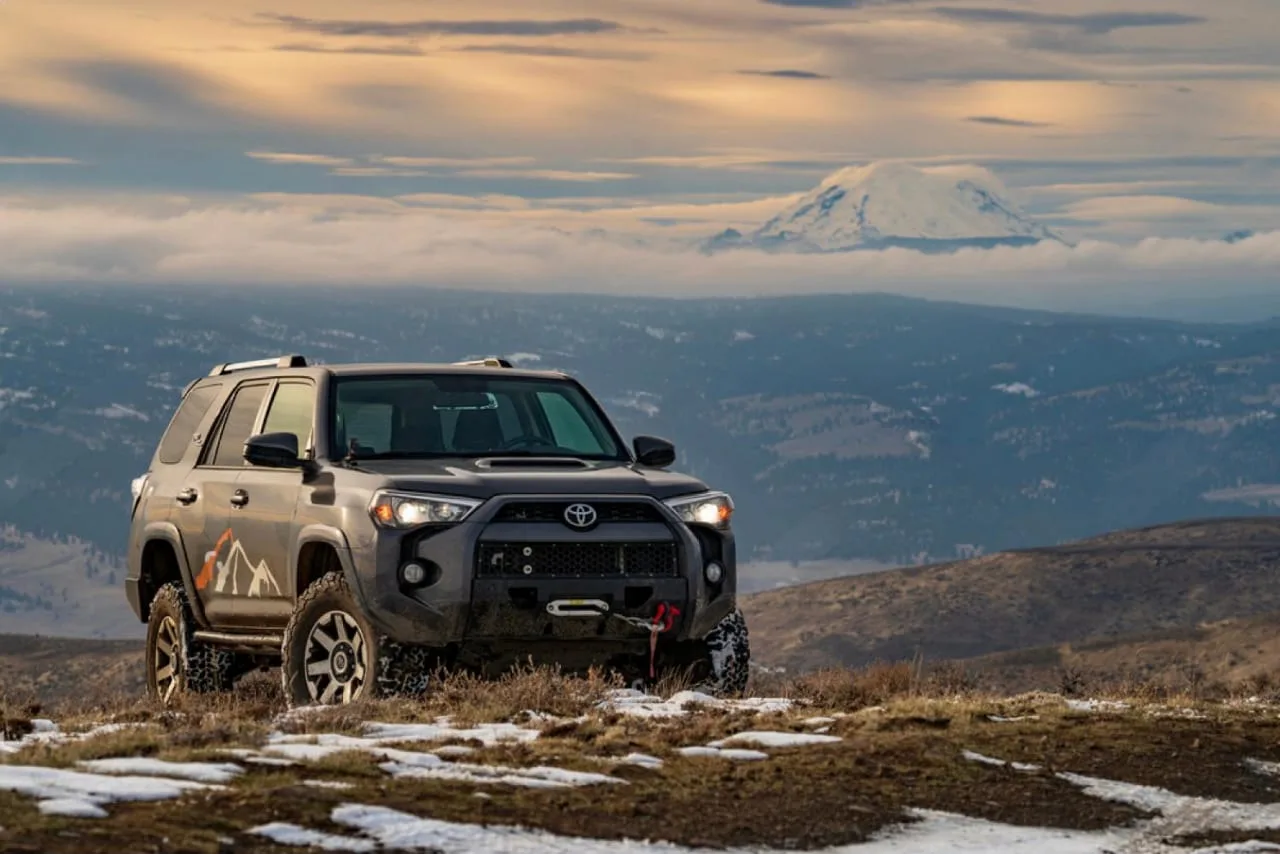
One throwback to the first generation includes a power rear window like the one that had the SoCal fans enamored with it in the 1980s.
Fun fact: Toyota has added a playful touch to the 2025 4Runner’s headlight assemblies with hidden Easter eggs. Most trims feature an illuminated “4Runner” in the lower corner of the headlights. On Trailhunter models, the passenger-side headlight showcases a compass logo, while the driver-side displays “Trailhunter.”
TRD Pro models add their own unique flair, with “TRD” on the passenger-side headlight and “Pro” on the driver-side. Additionally, TRD Pro replaces the standard “4Runner” badge on the tailgate with a bold “TRD Pro” emblem.
The New 4Runner Looks Similar To The Tacoma SUV
If you think the 4Runner resembles the Tacoma, you’re right. Not only does it use the same platform, but it also shares the same desert racing inspiration. This 4Runner is 2.4 inches longer than the fifth generation.
Color Options and Customization Choices
Toyota has gone all out on the color options. Depending on the model, you can choose from the following colors:
- Ice Cap
- Cutting Edge (new)
- Underground
- Black
- Heritage Blue
- Everest (new and the only green in the lineup)
The 2025 TRD Pro exclusive color: Mudbath
Premium colors include Supersonic Red and Windchill Pearl.
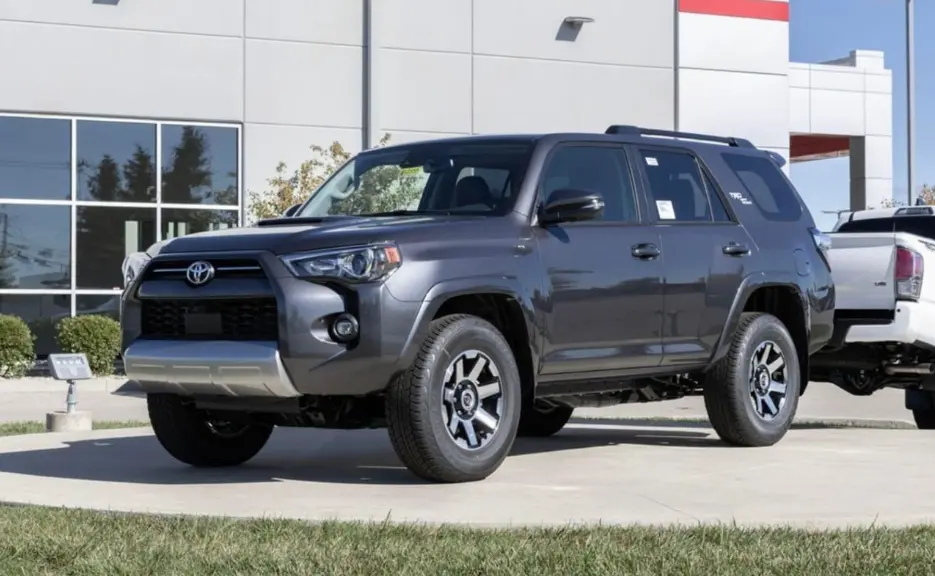
Powertrain and Performance
With an updated platform and restyle come brand fresh power options. Never wavering from its 4WD roots, the newest 4Runner is laser-focused on a distant hill that needs conquering, and to do that, you need exceptional power.
Performance of the New 2.4L Turbocharged Engine “i-FORCE”
The novel 2.4L i-FORCE turbo is designed to deliver performance regardless of the conditions. There are two engine configurations to choose from and they’re model-dependent.
This high-performance motor carries on Toyota’s tradition of durability and reliability and is shared with the Tundra and other rugged models.
Features of the i-FORCE MAX Hybrid Powertrain
The hybrid powertrain integrates a hybrid battery and motor to boost torque and reduce fuel consumption, especially during low-speed driving; very trail-worthy.
Transmission and Drivetrain
The 4Runner’s powertrain and drivetrain deliver robust performance and exceptional overlanding capability, blending reliability with advanced engineering for any adventure.
Adoption of 8-speed Automatic Transmission and Drivetrain Options
For all of that power, you need an outstanding drivetrain. Toyota pairs the i-FORCE engines with their 8-speed automatic transmission. After some issues with the previous 8-speed automatic transmission, Toyota redesigned it for the 2025 models. The bad news is that there is no manual option for the 2025 models.
All-Wheel Drive (AWD) and Four-Wheel Drive (4WD) Options
Depending on the model, you have available full or part-time 4WD and AWD as choices.
| Model | Drivetrain |
|---|---|
| SR5 | 2WD standard / AWD PT 4WD optional |
| TRD Sport | 2WD standard / AWD PT 4WD optional |
| TRD Sport Premium | 2WD standard / AWD PT 4WD optional |
| TRD Off-Road | AWD/ PT 4WD standard |
| TRD Off-Road Premium | AWD/ PT 4WD standard |
| Limited | 2WD standard / AWD PT 4WD / FT 4WD |
| Platinum | FT 4WD standard |
| TRD Pro | AWD/ PT 4WD standard |
| Trailhunter | AWD/ PT 4WD standard |
Locking Rear Differential and Low-Gear Range
The locking rear differential comes standard on the TRD Pro.
| Model | Differential | Low Gear Range |
|---|---|---|
| SR5 | No locking | 2.57:1 |
| TRD Sport | No locking | 2.57:1 |
| TRD Sport Premium | No locking | 2.57:1 |
| TRD Off-Road | Electronic Control Lock | 2.57:1 |
| TRD Off-Road Premium | Electronic Control Lock | 2.57:1 |
| Limited | No locking | 2.57:1 |
| Platinum | No locking | 2.57:1 |
| TRD Pro | Electronic Control Lock | 2.57:1 |
| Trailhunter | Electronic Control Lock | 2.57:1 |
Off-Road Capabilities
Let’s not forget the 4Runner was made to run on the roughest terrains with ease. With the move to the TNGA-F platform, this 4Runner showcases its prowess with these two fresh models: TRD Pro and Trailhunter.
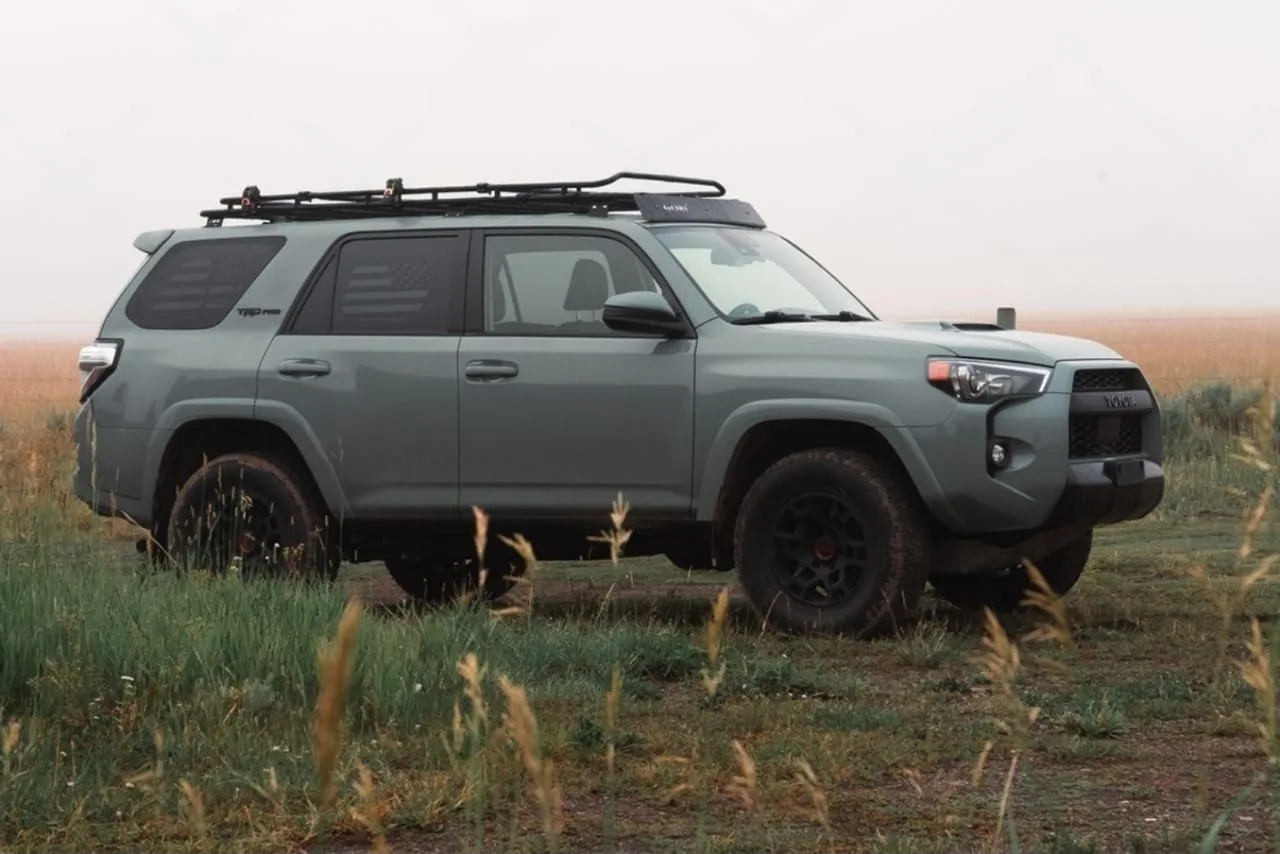
Approach Angle / Departure Angle / Breakover / Ground Clearance
| Model | Approach Angle | Departure Angle | Breakover Angle | Ground Clearance |
|---|---|---|---|---|
| SR5 | 18 degrees | 22 degrees | 23 degrees | 8.1 inches |
| Sport, Limited, Platinum | 18 degrees | 22 degrees | 24 degrees | 8.8 inches |
| Off-Road | 19 degrees | 24 degrees | 24 degrees | 9.1 inches |
| TRD Pro / Trailhunter | 33 degrees | 24 degrees | 24 degrees | 10.1 inches |
Off-Road Equipment for TRD Pro and Trailhunter Trims
Off-road equipment is a must on these models, and while there are many aftermarket options available to 4WD enthusiasts, Toyota took care of some of these features for you.
The Trailhunter comes equipped with Old Man Emu® shocks, a low profile and high mount air intake, 33-inch Toyo tires on 18-inch rims, and an onboard air compressor.
Like the Trailhunter, the TRD Pro is powered by the i-FORCE MAX engine and bears TRD-tune Fox® QS3 adjustable shocks, a TRD performance air intake, and a set of 33-inch tires.
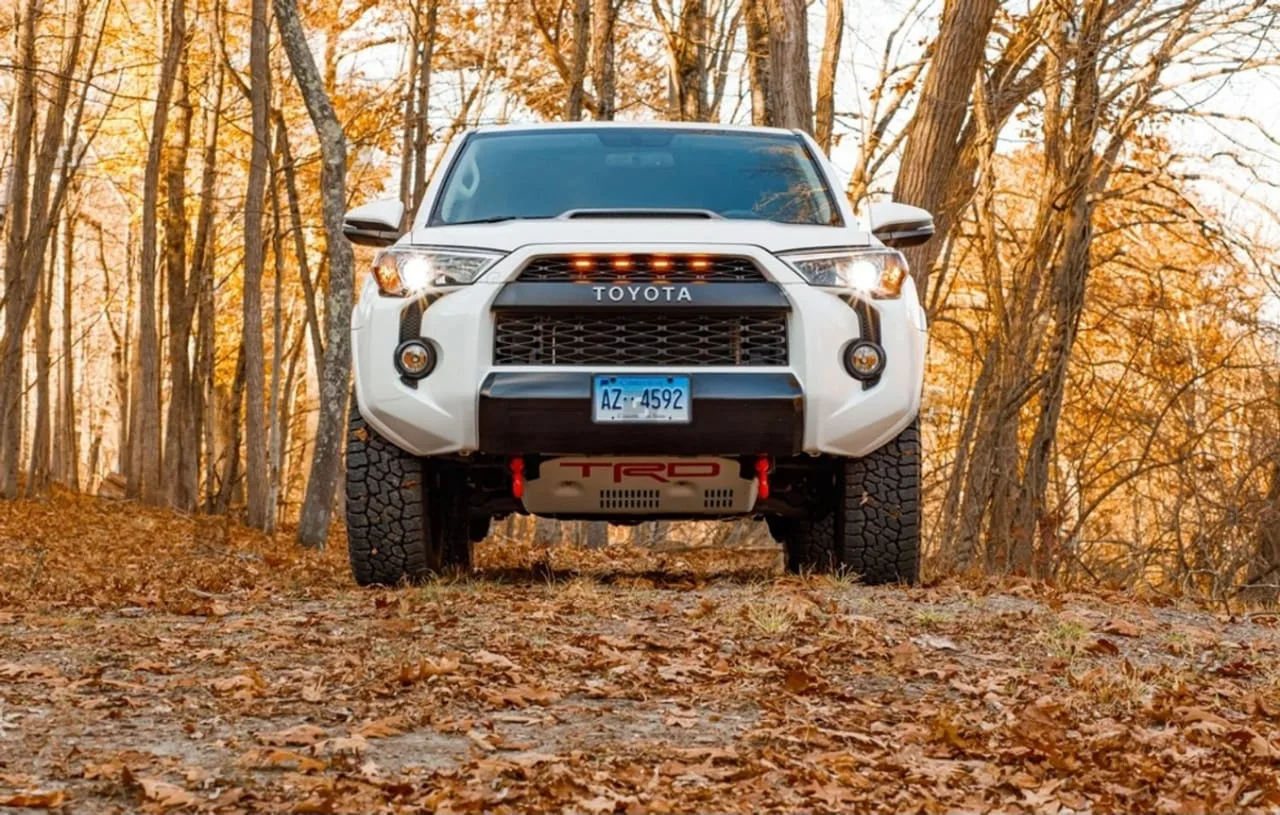
Off-Road Cruise Control and FOX® Suspension
The 4Runner shares the Fox® Suspension with the Tacoma TRD Pro, Tundra TRD Pro, and Sequoia TRD Pro. All formidable 4WD vehicles absorb the hits with a set of Fox® shocks.
Key Features of Fox Suspension:
Fox® 2.5 Internal Bypass Shocks
Offer superior damping for trail conditions while maintaining a smooth ride on-road.
Piggyback Reservoirs
Allow additional oil storage, reducing heat buildup during intense use and maintaining consistent performance.
Key Features of Fox Suspension:
Durable Construction
Aluminum bodies dissipate heat more effectively than steel. High-strength materials designed to handle extreme off-road impacts and conditions.
Internal Bypass Technology
Automatically adjusts damping levels based on the position of the shock shaft. Provides a plush ride over small bumps and increased control over large impacts.
Lift and Ground Clearance
Fox® suspension often provides a factory lift (e.g., 1.5 inches in the front, 1 inch in the rear on some Toyota TRD Pro models), improving ground clearance and approach/departure angles for off-roading.
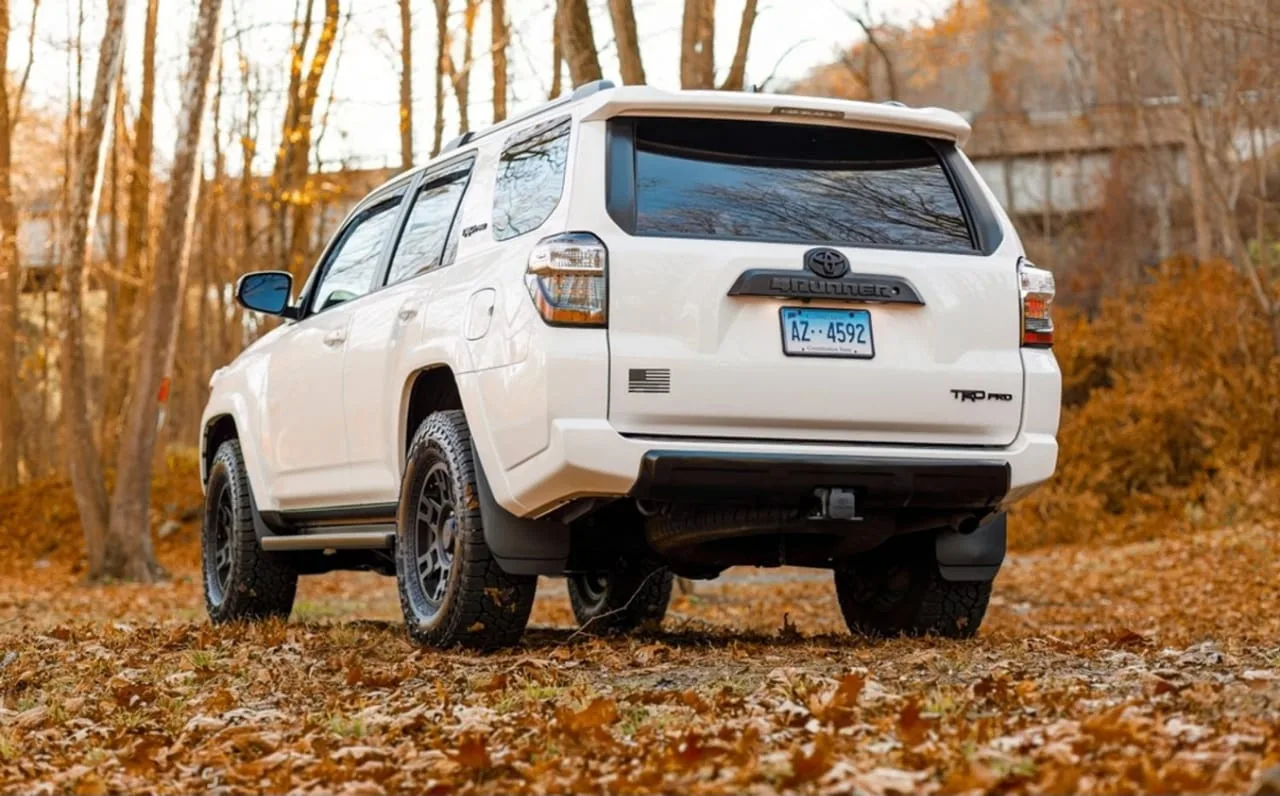
CRAWL Control
Toyota’s CRAWL Control acts like low-speed cruise control for challenging terrains. Introduced in 2008, it automatically manages acceleration and braking, allowing drivers to concentrate on steering through obstacles like sand, rocks, and mud. Operating between 1 to 5 mph, drivers can select speeds suited to specific conditions. The system uses sensors to adjust power to each wheel, enhancing traction and stability. Designed for short-term use, it automatically pauses if the vehicle exceeds 15 mph or after 12 minutes of continuous operation.
SDM
The Stabilizer Disconnect Mechanism (SDM) on the 2025 Toyota 4Runner enhances trail performance by disengaging the stabilizer bar at the push of a button, allowing greater front-wheel suspension articulation to keep all four wheels in contact with uneven terrain. This feature improves traction, reduces body tilt, and minimizes discomfort for occupants. When speeds exceed 19 MPH, the stabilizer bar automatically re-engages, providing stability for smooth on-road driving, seamlessly blending 4WD capability with everyday comfort.
Optional Off-Road Features and Customization Elements
Like any other 4WD vehicle, there are many aftermarket options available to make the 4Runner uniquely your own based on your driving style. Here are some of the customization parts available:
- Lifts
- Shocks
- Racks
- Winches
- Skid plates
- Bumpers and Grilles
Towing and Payload Capacity
Off-roading is not complete unless you can haul your toys to your destination, which is why the refreshed 4Runner has been designed as your ultimate adventure vehicle.
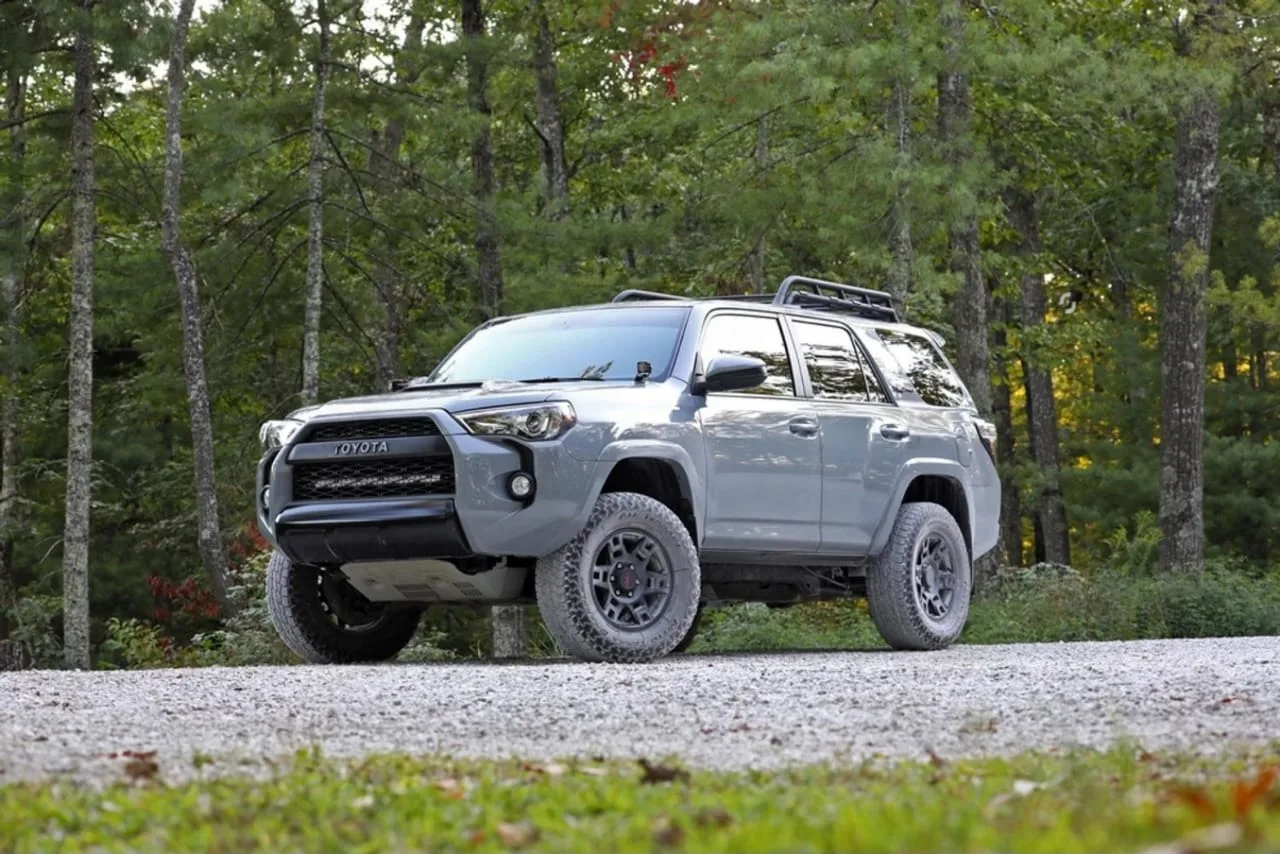
Towing Capacity and Payload Performance
Across the model lineup, the towing capacity is set at 6,000 pounds when properly equipped, which is the average weight of a medium-sized camper. The payload is around 1,600 pounds, which should be enough to bring all of your gear with you. The TRD Pro has an ARB cargo box for even more storage area, and the rear roll-down window offers room to stick a surfboard out the back.
The seats fold down, so you have even more room in the cargo area.
Comparison with Competitors
| Model | Towing | Payload |
|---|---|---|
| 2025 4Runner | 6,000 | 1,600 |
| 2025 Ford Bronco | 3,500 (Raptor model 4,400) | 1,015 up to 1,453 |
| 2025 Jeep Wrangler | 3,500 | 1,088 up to 1,400 |
| 2025 Land Cruiser 250 | 6,000 | 1,280 |
For an interesting informal poll, the 4Runner6G forum asked its readers which model they were considering alongside the Gen 6 4Runner, and over 50% were looking at the Land Cruiser as an option. 18% said they were not considering any other vehicle. It looks like Toyota has a good hold on the off-roading buyers, even if this was a 4Runner forum.
If you’re planning on shopping for a Land Cruiser, then check out the Land Cruiser inventory at Flex Motors.
We’re the #1 Land Cruiser dealership in Japan with over 50 years of experience and have recently opened a San Diego, CA office where you’ll find Land Cruisers, 4Runners, Tacomas, and our own Renoca Series of retromod Land Cruisers.
Interior, Comfort, and Cargo
With a brand new body and frame comes an upgrade of the interior, too. Toyota has focused on ride comfort for the last couple of generations and this one is no different. Motortrend gives Toyota props for modernizing the entire interior space.
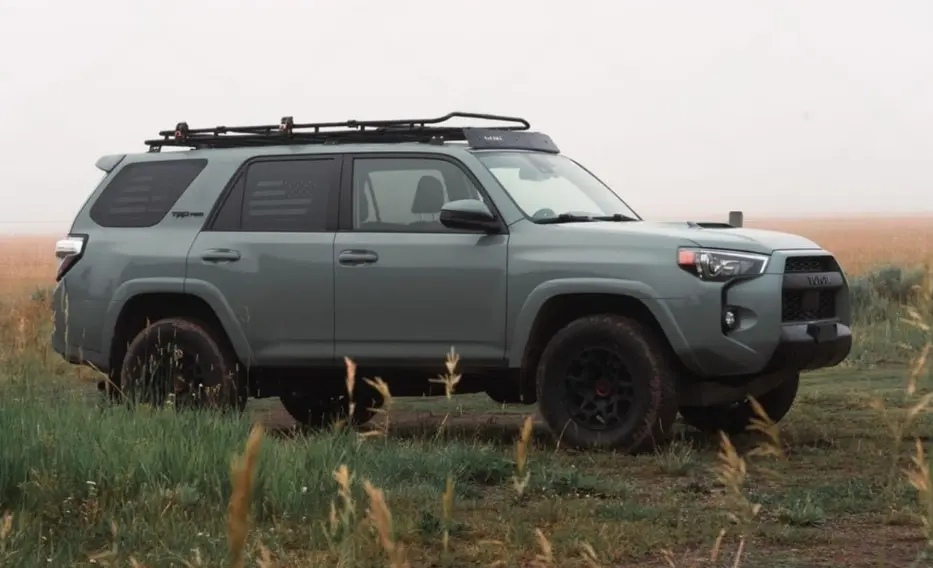
Interior Design and Material Upgrades
Since the 4Runner is in the luxury class, you would be right to expect upper-level materials like leather and premium stitching. You’ll find heated and ventilated seats in the Limited model, as well as leather-wrapped shift knobs in the TRD Pro. You’ll also find textured patterns across the dash.
New Infotainment System and Display
2025 brings advanced technology to the cabin by way of a revamped infotainment system and display. The smallest display is 8 inches and the upgraded 14-inch display includes a 14-speaker JBL® premium audio system.
You’ll also find Bluetooth and the usual connectivity options for all of the current devices; something that was a long time in coming for the Toyota 4Runners.
Availability and Utility of the Third-Row Seat
The third-row seat is optional in some models, which brings your seating capacity up from 5 to 7. When you’re not using the seats, fold them down and open up your cargo area.
Passenger Space and Comfort
With a longer body, you get some more room for you and your passengers. The interior headroom is 39.7 inches in the front and 39.8 inches in the back, 41.8 inches of legroom in the front and 34.8 inches in the back, and there are 55.2 inches of hip room in the front and 56.1 inches in the rear.
Passenger Comfort and Visibility
The rear seats are as carefully crafted as the front row, so your passengers will enjoy a comfortable ride experience. With wide windows, everyone in the vehicle can enjoy the view. The TRD Pro model has a sunroof that opens up the cabin to light and fresh air.
Seat Options and Arrangement
Like most SUVs, you have plenty of options when it comes to arranging the seats the best way for your family. The 60/40 split reclining tumble seats make it easy to drop the seat and open up more cargo room without losing all of your passenger space.
Unlike the previous generation, the tumble seats do not fold flat, so you’re always going to have a slight lift to the cargo floor with the seats dropped.
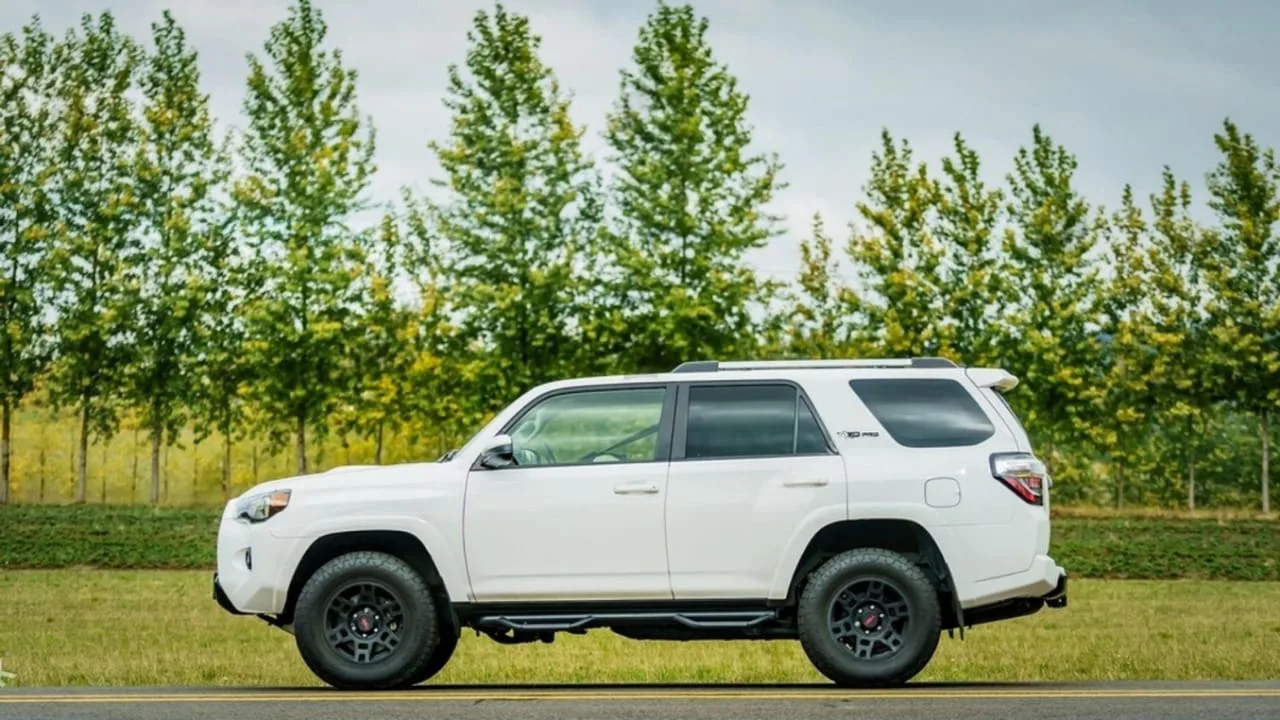
Cargo Capacity and Versatility
Speaking of cargo space, the total cargo volume is 90.2 inches behind the front and second seats in select models, and 84.4 inches behind the front, second, and third-row seats in other models.
You’ll find a dip in the floor in the i-FORCE MAX hybrid-powered vehicles where the battery sits in the rear of the vehicle, and the C pillars are home to cooling vents.
Convenience of the Slide-Out Floor Option and Storage Capacity
Unfortunately for the fans of the slide-out floor option, this is not available in the 2025 4Runner; at least not at the time of this article. There is some talk about how it may be a dealer-installed option at some point, but no word from Toyota itself. It would be a popular addition if the option becomes available.
One thing the 2025 model has is an amazing abundance of cup holders. Three in each front door, and they’re good sized too. There are cubbies everywhere in this SUV. Bins and tie-downs are in the third-row seat area, and the second-row doors have cup holders, as well as the pull-down console. There are a total of 12 cup holders. Stay hydrated.
Because of the extra room the batteries take up, the load height is higher than the non-hybrid versions.
Arrangement Suited for Families and Outdoor Users
The configuration options make this the perfect family vehicle. There is plenty of room for long items like golf clubs and fishing poles, as well as room in the cargo hold for a tent and sleeping bags. Need more room? Put an overland cargo rack on the top and load it up.
Infotainment and Connectivity
Up until now, the 4Runner has been way behind in the tech arena, and it’s great that Toyota took the time to bring the tech up to date with the latest options. Like Motortrend said, it’s been thoroughly modernized.
Standard 8-Inch Display and Optional 14-Inch Display
While the 8-inch screen is standard, an upgrade to the 14-inch display offers plenty of room to see all of your options with large displays, as well as set up voice recognition for hands-free activation.
Apple CarPlay, Android Auto, and Digital Key Features
Finally, you can stay connected to your favorite apps through Apple CarPlay®, Android Auto™, Bluetooth, and SiriusXM® in addition to Toyota’s Safety Connect via your Toyota app, Drive Connect with navigation, and Remote Connect which locks and unlocks your doors through an app on your smartwatch. The Wi-Fi hotspots are through AT&T. Some of these services require a subscription.
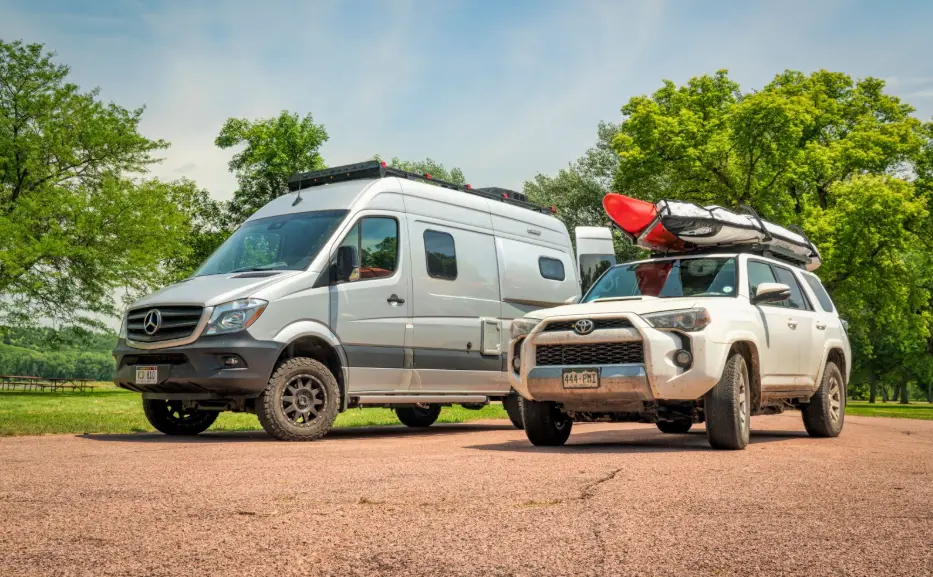
Safety and Driver-Assistance Features
Toyota is legendary for its commitment to safety, and the 2025 models are chock full of safety and driver assist features that will make your trip more enjoyable as they take some of the stress of driving off of you.
TSS 3.0 Safety Features (Automated Emergency Braking, Lane-Keeping Assist, etc.)
Toyota Safety Sense (TSS) 3.0 now includes Proactive Driving Assist (PDA), which uses cameras and radar to provide gentle braking or steering for tasks like maintaining distance from other vehicles, pedestrians, or bicyclists, as well as braking into curves. PDA operates under different conditions than the Pre-Collision System (PCS) and is not a substitute for it.
Key enhancements in TSS 3.0 include:
- Pre-Collision System (PCS) with Pedestrian Detection: Improved sensors offer enhanced intersection support and detection of motorcyclists, in addition to pedestrians and bicyclists.
- Lane Departure Alert: Now includes Steering Assist and enhanced lane recognition, detecting 3D objects like guardrails to help define lanes.
- Dynamic Radar Cruise Control (DRCC): Features Full-Speed Range, a fourth following distance setting, and improved detection of multiple vehicles and adjacent lanes for smoother speed adjustments.
- Lane Tracing Assist (LTA): Requires DRCC and detectable lane markings, offering enhanced lane centering and increased space between vehicles in adjacent lanes. A new Emergency Driving Stop System monitors driver responsiveness, bringing the vehicle to a stop if necessary.
- Road Sign Assist: Detects and displays various road signs, including speed limits and warnings, on the Multi-Information Display.
Additional available features include a Blind Spot Monitor (BSM), Rear Cross-Traffic Alert (RCTA), and standard Hill Start Assist Control (HAC), providing added safety and convenience.
Advanced Driver Assistance Systems and Optional Features
Most of the advanced driver assistance features have been included above, but here are some of the other optional services you can subscribe to:
- Service Connect: Delivers personalized maintenance updates and vehicle health reports.
- Safety Connect: Includes Emergency Assistance, Roadside Assistance, Automatic Collision Notification, and stolen vehicle locator.
- Drive Connect: Includes a navigation system with Google points of interest in case you’re out wandering looking for something to do.
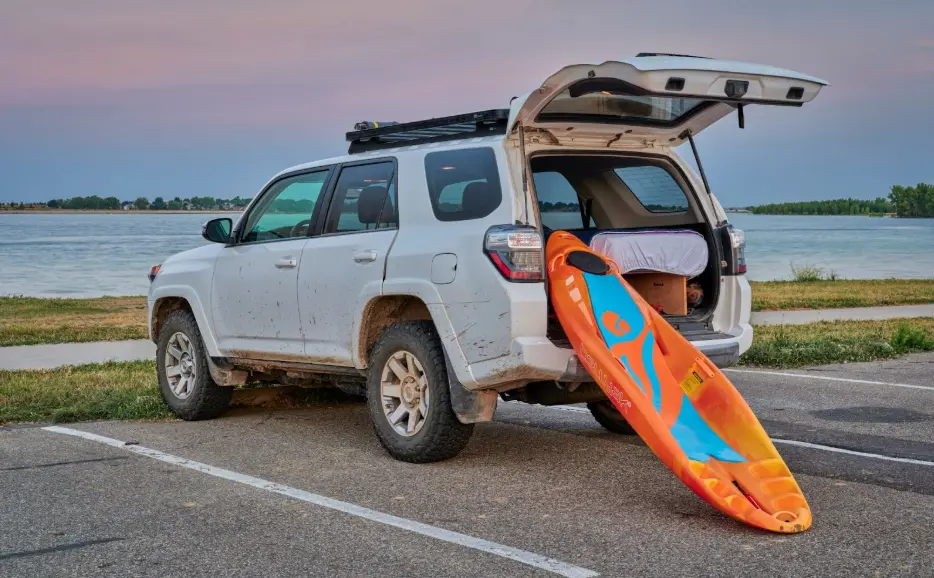
Trim Levels and Pricing
As we discussed, there are 9 trim levels for the 2025 4Runner. Let’s look at the features of each one.
Features of Each Trim Level
SR5
The base model is equipped with the i-FORCE 2.4L turbocharged four-cylinder engine, producing 278 horsepower and 317 lb-ft of torque. Available in both 2WD and 4WD configurations, it offers essential features suitable for daily driving and light trail use.
TRD Sport
Enhances the SR5 with sport-tuned suspension and distinctive styling elements. Available in 2WD and 4WD, it caters to those seeking a more dynamic on-road experience.
TRD Sport Premium
Builds upon the TRD Sport by adding premium interior features, including upgraded upholstery and advanced technology options, providing a blend of comfort and performance.
TRD Off-Road
Designed for enhanced 4WD capabilities, it comes with features like Multi-Terrain Select and CRAWL Control. Available with both the i-FORCE and the i-FORCE MAX hybrid powertrains, offering flexibility in performance preferences.
TRD Off-Road Premium
Adds luxury to overlanding readiness with premium interior materials and additional comfort features, while retaining the rugged capabilities of the TRD Off-Road trim.
Limited
Focuses on luxury and convenience, featuring leather-trimmed seats, advanced technology, and a more refined suspension setup. Available in both i-FORCE and i-FORCE MAX hybrid variants, with optional full-time 4WD on hybrid models.
Platinum
A new addition to the lineup, the Platinum trim offers top-tier luxury with features like heated second-row seats, a Head-Up Display, and a standard hybrid powertrain with full-time 4WD, catering to those seeking a premium SUV experience.
TRD Pro
The pinnacle of rough performance, equipped with advanced suspension components, skid plates, and the i-FORCE MAX hybrid powertrain as standard, delivering both power and efficiency for serious backcountry enthusiasts.
Trailhunter
Another fresh addition, the Trailhunter is tailored for overlanding adventures, featuring 33-inch off-road tires, ARB’s Old Man Emu 2.5-inch forged shocks, a high-mounted air intake, and high-strength steel skid plates. It comes standard with the i-FORCE MAX hybrid powertrain and full-time 4WD, making it ideal for extended backcountry expeditions.
Each trim level of the 6th Generation 4Runner is designed to cater to a specific set of needs, whether it’s daily commuting, luxury travel, or high country exploration, providing a versatile range of options for prospective buyers.
Price Range and Recommended Trim Selection
The 2025 Toyota 4Runner has a starting price of $42,220 for the base SR5 trim, and the price increases depending on the trim and options:
| Trim | Starting Price |
|---|---|
| SR5 | Starts at $42,220 |
| TRD Sport | Starts at $48,700 |
| TRD Off-Road | Starts at $50,640 |
| TRD Sport Premium | Starts at $54,060 |
| Limited | Starts at $56,850 |
| TRD Off-Road Premium | Starts at $59,220 |
| 4Runner 4×4 TRD Off-Road Premium i-FORCE MAX | Starts at $59,220 |
| 4Runner 4×4 Limited i-FORCE MAX | Starts at $61,650 |
| 4Runner 4×4 Platinum i-FORCE MAX | Starts at $64,310 |
| 4Runner 4×4 Trailhunter i-FORCE MAX | Starts at $68,350 |
Cost-Performance Comparison with Competitors
| Make and Model | MSRP | Depreciation (at 5 years) | Notes |
|---|---|---|---|
| Toyota 4Runner | $42,200 | 39% | Price for SR5 |
| Ford Bronco | $37,995 | 47% | $29,995 Sport Model |
| Jeep Wrangler | $33,990 | 34% | $52,590 – $72,290 4xe |
| Toyota Land Cruiser 250 | $57,345 | 30% | $76,345 First Edition |
Fuel Economy and Real-World MPG
Overall, while hybrids are highly efficient, their actual performance depends on how, where, and under what conditions they are driven.
Improved Fuel Economy with New Engines
| Engine type and drivetrain | City/highway/combined MPG |
|---|---|
| i-FORCE 2WD SR5, Sport, Sport Premium | 20/26/22 |
| i-FORCE 2WD Limited | 20/24/22 |
| i-FORCE 4WD SR5, Sport, Sport Premium, Off-Road, Off-Road Premium | 19/25/21 |
| i-FORCE 4WD Limited | 20/24/21 |
| i-FORCE MAX 4WD Off-Road, Off-Road Premium, Limited, Trailhunter, Platinum, TRD Pro | 23/24/23 |
Real-World MPG Evaluation of Hybrid Models
According to the Journal of Advanced Transportation, Hybrid-electric vehicles (HEVs) use both an electric motor and a gasoline engine to boost fuel efficiency and cut emissions. While they perform great in lab tests, real-world results can vary depending on how and where you drive—just like your gas mileage changes with habits like hard acceleration or braking. HEVs shine in city driving with lots of stops since regenerative braking helps save energy. But on highways, where speeds are steady, their benefits are less noticeable.
Things like cold weather, which lowers battery efficiency, or hilly terrain, which burns more fuel, can also impact performance. To get a clearer picture of how HEVs handle everyday driving, automakers are using tech like telematics and diagnostics to gather real-world data.
Fuel Economy and Real-World MPG
Comparison with Competitors in Fuel Economy
| Model | City/highway/combined MPG |
|---|---|
| 2025 4Runner – Hybrid | 20/24/21 |
| 2025 4Runner – Gas | 20/26/22 |
| Ford Bronco | 20/21 |
| Jeep Wrangler | 20/23/21 |
Warranty and Maintenance Coverage
Toyota’s normal warranty for the 4Runner is as follows:
- 36/36,000 Basic
- 60/60,000 Powertrain
- 60/60,000 Restraint System
- 60/60,000 Corrosion Perforation
In addition, Toyota provides an Emission Control Warranty for both the Federal and California standards.
Toyota’s Warranty and Maintenance Packages
Toyota has a list of scheduled service recommendations that you should complete as part of your warranty.
Basic Service
Every 5,000 miles: rotate tires, inspect wiper blades, inspect and adjust fluid levels, check brakes, drums, and discs or pads. Change the oil and oil filter.
Intermediate Service
Every 15,000 miles: inspect all fluids, lubricate propeller shaft, rotate tires, inspect brakes, inspect ball joints, air filters, and steering gears.
Major Service
Every 30,000 miles: check all fluid levels, replace the cabin air filter, replace the engine air filter, rotate the tires, and re-torque the propeller shaft bolt. Inspect the transmission fluid, ball joints, brake components, drive shaft boots, coolant, and front differential oil.
If your driving conditions are extreme, then you need to do these types of checks more often to help extend the life of your 4Runner.
2025 Toyota 4Runner vs. the Competition
Let’s see how the 4Runner measures up to its closest competition.
4Runner vs Ford Bronco
| Feature | 2025 Toyota 4Runner | 2025 Ford Bronco |
|---|---|---|
| Price Range | $43,000 and up | $38,000 and up |
| Engine Options | 2.4L turbocharged 4-cylinder (278 hp, 317 lb-ft), Hybrid (326 hp, 465 lb-ft) | 2.3L EcoBoost (300 hp), 2.7L EcoBoost V6 (330 hp), Bronco Raptor 3.0L V6 (418 hp) |
| Off-Road Features | CRAWL Control, Multi-Terrain Select, Stabilizer Bar Disconnect, 9.2-inch ground clearance | G.O.A.T. modes, front and rear locking differentials, Sasquatch Package, up to 13.1-inch ground clearance |
| Towing Capacity | Up to 6,000 pounds | Up to 4,500 pounds |
| Interior Tech | 8-inch or 14-inch touchscreen, Apple CarPlay, Android Auto | SYNC 4, 12-inch touchscreen, over-the-air updates, marine-grade vinyl, rubberized flooring |
| Seating Capacity | 5/7 with the third-row option | Up to 5 |
| Cargo Capacity | Up to 84.4 cubic feet | Up to 77.6 cubic feet |
4Runner vs Jeep Wrangler
| Feature | 2025 Toyota 4Runner | 2025 Jeep Wrangler |
|---|---|---|
| Price Range | $43,000 and up | $35,000 and up |
| Engine Options | 2.4L turbocharged 4-cylinder (278 hp, 317 lb-ft), Hybrid (326 hp, 465 lb-ft) | 3.6L V6 (285 hp, 260 lb-ft); 2.0L turbocharged 4-cylinder; 6.4L V8 in Rubicon 392 (470 hp) |
| Off-Road Features | CRAWL Control, Multi-Terrain Select, Stabilizer Bar Disconnect, 9.2-inch ground clearance | Solid axles, locking differentials, sway bar disconnect, up to 11.8 inches ground clearance |
| Towing Capacity | Up to 6,000 pounds | Up to 3,500 pounds |
| Interior Tech | 8-inch or 14-inch touchscreen, Apple CarPlay, Android Auto | Up to 12.3-inch touchscreen, wireless Apple CarPlay, Android Auto |
| Seating Capacity | 5/7 with the third-row option | Up to 5 |
| Cargo Capacity | Up to 84.4 cubic feet | Up to 84.4 cubic feet |
4Runner vs Toyota Land Cruiser 250
| Feature | 2025 Toyota 4Runner | 2025 Toyota Land Cruiser 250 |
|---|---|---|
| Price Range | $43,000 and up | $56,450 and up |
| Engine Options | 2.4L turbocharged 4-cylinder (278 hp, 317 lb-ft), Hybrid (326 hp, 465 lb-ft) | 2.4L turbocharged 4-cylinder hybrid (326 hp, 465 lb-ft) |
| Off-Road Features | CRAWL Control, Multi-Terrain Select, Stabilizer Bar Disconnect, 9.2-inch ground clearance | CRAWL Control, FT 4WD, Stabilizer Bar Disconnect, Multi-Terrain Monitor, Multi-Terrain Select, Electronic Locking Differential, Skid Plates |
| Towing Capacity | Up to 6,000 pounds | Up to 6,000 pounds |
| Interior Tech | 8-inch or 14-inch touchscreen, Apple CarPlay, Android Auto | 12.3-inch touchscreen with wireless Apple CarPlay and Android Auto |
| Seating Capacity | 5/7 with the third-row option | Up to 5 – no third-row option |
| Cargo Capacity | Up to 84.4 cubic feet | Up to 82.1 cubic feet |
Conclusion
Summary of the 2025 4Runner’s Appeal and Reasons to Choose
The 2025 Toyota 4Runner is the ultimate SUV for 4WD enthusiasts, adventurers, and families who want a rugged, reliable ride. With features like CRAWL Control, Multi-Terrain Select, and a Stabilizer Bar Disconnect, it’s built to tackle tough trails with ease. Its sturdy body-on-frame design, 9.2 inches of ground clearance, and powerful engine options, including a turbocharged hybrid, give you the perfect balance of performance and efficiency. Plus, with up to 6,000 pounds of towing capacity, seating for seven, and loads of cargo space, it’s ready for everything from weekend getaways to daily errands.
On the tech side, the 4Runner doesn’t disappoint. It comes with an optional massive 14-inch touchscreen, a Multi-Terrain Monitor for navigating tricky spots, and Toyota Safety Sense 3.0 to keep you and your passengers safe. Add in its bold, iconic design, legendary reliability, and competitive pricing, and it’s no wonder the 4Runner is a go-to choice for so many.
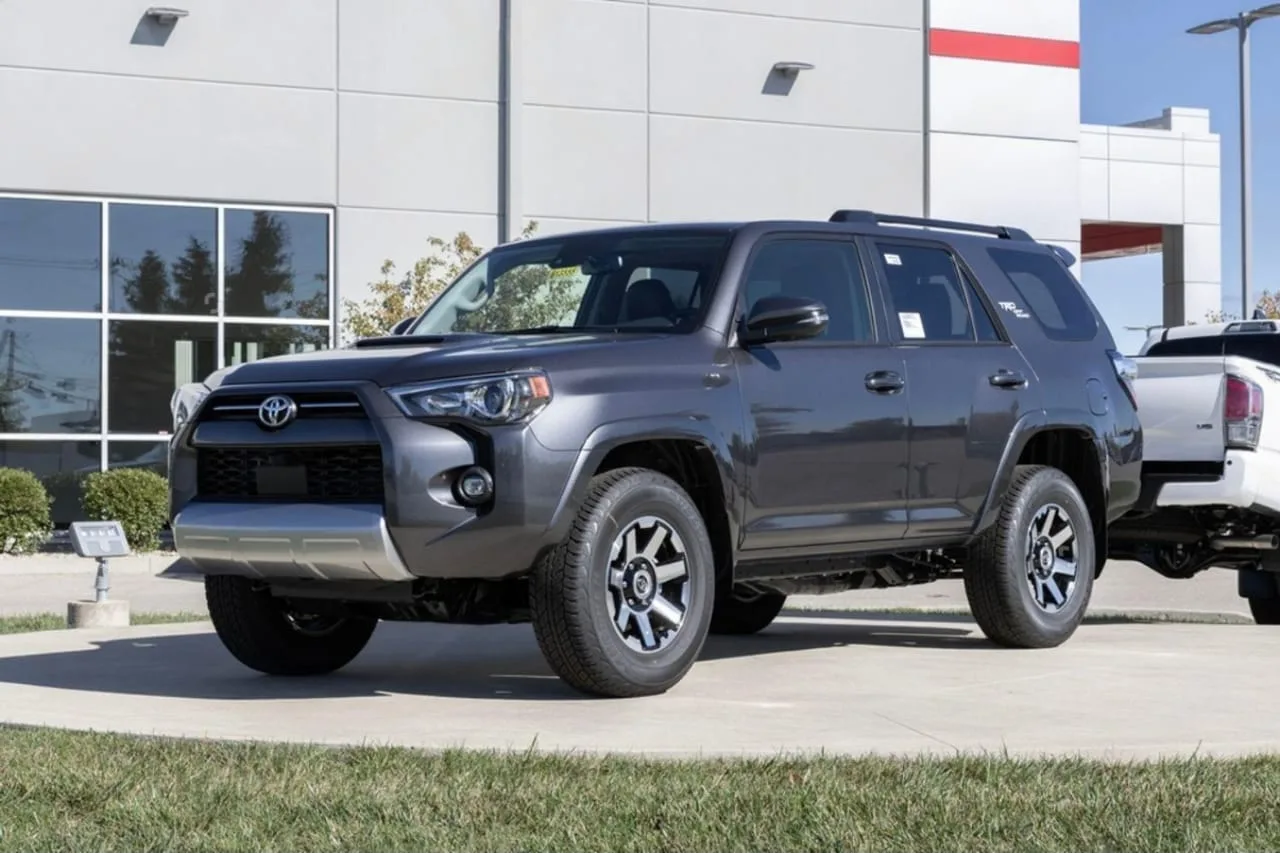
Expectations for Future Generations
With its eye always on the next horizon, it doesn’t take a crystal ball to determine that future 4Runners will focus on better 4WD performance and fuel efficiency. It might seem odd to think that a hybrid engine would have the horsepower to plow through dunes and climb over rocks, but this i-FORCE MAX turbo does.
The further these types of engines advance the more performance Toyota will try to get from them. According to Jordan Choby, Group Vice President of Powertrain Toyota Motors North America, Toyota will invest $50 million in an automotive battery lab at its R&D headquarters in Michigan. 2025 should see the first U.S.-assembled EV, and this will be the first North American testing ground.
FAQs
How high is the 2024 4Runner TRD Pro?
9 to 9.6 inches off the ground.
How much to fill up a 4Runner TRD Off-Road Premium?
23-gallon fuel tank with an average of 15/16 MPG.
Does the 2002 Toyota 4Runner Limited have a GPS device installed?
No. The 2002 did not have an infotainment screen nor did it have any outside connectivity, which is needed for GPS.
Does the 2024 4Runner have automatic headlights?
Yes. Some of the 2024 models, including the Limited, have auto headlights and daylight sensors.
If you have any other questions about the 2025 4Runner, then contact us for assistance.



